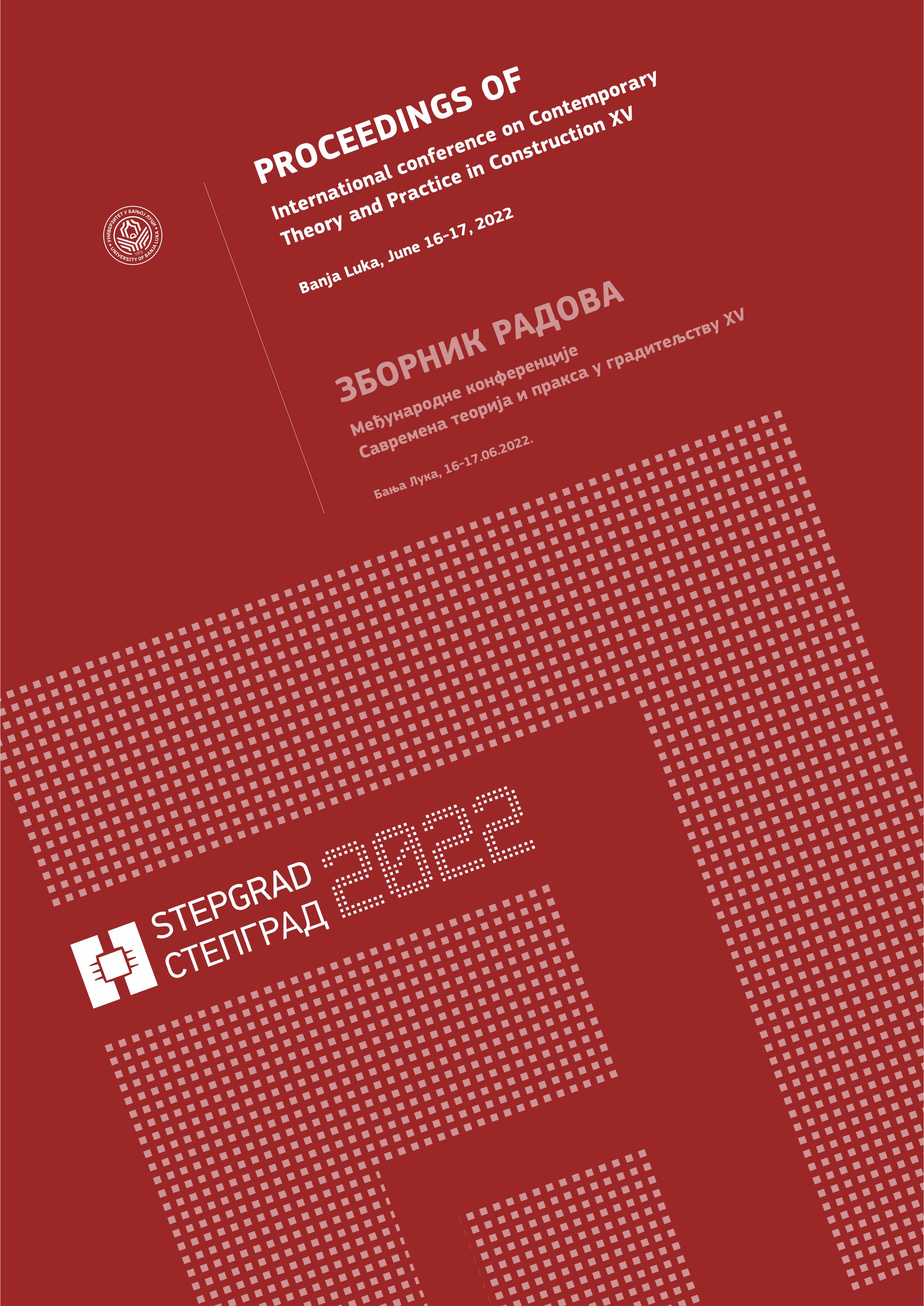SETTING THE REAL-TIME FLOOD FORECASTING MODELS IN UKRINA, TINJA AND BRKA UNGAUGED BASINS
DOI:
https://doi.org/10.7251/STP2215126TAbstract
Flood forecasting (FF) is one of the most challenging problems in Hydraulic Engineering. It is also most important due to tremendous contribution in reducing economic and life losses that usually occurs during flooding. Major part of the FF system is hydrologic and hydraulic model that simulate runoff and corresponding water levels in rivers, based on the input data that are results from the meteorologic forecasting model. Major uncertainty of the FF systems that operates in real time usually stems from combined hydrologic-hydraulic model, apart from the large uncertainty that comes from the meteorological model. This uncertainty significantly rises when the catchments of interests are ungauged. In this paper, methodology of setting hydrological and hydraulic model that operates in real time FF and early warning system is presented. Case study are ungauged basins of Ukrina, Tinja and Brka, tributaries of Sava River.
References
J. Masters, “Earth’s 40 Billion-Dollar Weather Disasters of 2019: 4th Most Billion-Dollar Events on Record,” 2022. https://blogs.scientificamerican.com/eye-of-the-storm/earths-40-billion-dollar-weather-disasters-of-2019-4th-most-billion-dollar-events-on-record/ (accessed Feb. 21, 2022).
J. Thielen-del Pozo et al., The benefit of continental flood early warning systems to reduce the impact of flood disasters, no. April 2016. 2015.
G. L. Vandewiele, C. Y. Xu, and W. Huybrechts, “Regionalisation of physically-based water balance models in Belgium. Application to ungauged catchments,” Water Resour. Manag., vol. 5, no. 3–4, pp. 199–208, 1991, doi: 10.1007/BF00421989.
D. H. Burn and D. B. Boorman, “Estimation of hydrological parameters at ungauged catchments,” J. Hydrol., vol. 143, no. 3–4, pp. 429–454, 1993, doi: 10.1016/0022-1694(93)90203-L.
L. Oudin, V. Andréassian, C. Perrin, C. Michel, and N. Le Moine, “Spatial proximity, physical similarity, regression and ungaged catchments: A comparison of regionalization approaches based on 913 French catchments,” Water Resour. Res., vol. 44, no. 3, p. n/a-n/a, 2008, doi: 10.1029/2007WR006240.
B. Sivakumar, V. P. Singh, R. Berndtsson, and S. K. Khan, “Catchment Classification Framework in Hydrology: Challenges and Directions,” J. Hydrol. Eng., no. 2, p. 130426211354007, 2013, doi: 10.1061/(ASCE)HE.1943-5584.0000837.
X. Kong, Z. Li, and Z. Liu, “Flood Prediction in Ungauged Basins by Physical-Based TOPKAPI Model,” Adv. Meteorol., vol. 2019, 2019, doi: 10.1155/2019/4795853.
S. A. Nielsen and E. Hansen, “Numerical Simulation of the Rainfall Runoff Process on a Daily Basis,” Nord. Hydrol., vol. 4, pp. 171–190, 1973.
DHI, “NAM manual.” 2014.
Zavod za Vodoprivredu d.o.o. Bijeljina, “Izrada mapa opasnosti i mapa rizika od poplava na slivu rijeke Vrbas u BiH - Pregled i analiza hidroloških podataka i razvoj hidroloških modela,” Banja Luka, Bijeljina, Sarajevo, Beograd, 2016.
DHI, “MIKE 11 - A modelling system for rivers and channels,” Reference manual. DHI, 2009.
DHI, “MIKE: A modelling system for Rivers and Channels - User guide,” User Guide. 2017, [Online]. Available: http://10.0.46.73/zrzyxb.20160781%0Ahttps://search.ebscohost.com/login.aspx?direct=true&db=a9h&AN=125384783&site=ehost-live&scope=site.
J. Berko, “Flood plain modelling,” 2014. https://www.slideserve.com/jamal/flood-plain-modelling.
EPTISA Servicios de Ingenieria S.L., “Technical assistance for development of the hydrological flood forecasting system for Sava River Basin (Phase 1. Bosna River),” Sarajevo-Banja Luka, 2019.
H. Madsen, “Automatic calibration of a conceptual rainfall–runoff model using multiple objectives,” J. Hydrol., vol. 235, no. 3, pp. 276–288, 2000, doi: 10.1016/S0022-1694(00)00279-1.
J. A. Vrugt, H. V. Gupta, W. Bouten, and S. Sorooshian, “A Shuffled Complex Evolution Metropolis algorithm for optimization and uncertainty assessment of hydrologic model parameters,” Water Resour. Res., vol. 39, no. 8, 2003, doi: 10.1029/2002WR001642.
R. Merz and G. Blöschl, “Flood frequency regionalisation—spatial proximity vs. catchment attributes,” J. Hydrol., vol. 302, no. 1–4, pp. 283–306, 2005.
ESRI, “How line density works.” http://resources.esri.com/help/9.3/arcgisdesktop/com/gp_toolref/spatial_analyst_tools/how_line_density_works.htm.
H. V. Gupta, H. Kling, K. K. Yilmaz, and G. F. Martinez, “Decomposition of the mean squared error and NSE performance criteria: Implications for improving hydrological modelling,” J. Hydrol., vol. 377, no. 1–2, pp. 80–91, 2009, doi: doi:10.1016/j.jhydrol.2009.08.003.

